 Murukesan Krishnapillai, project director, Cooperative Research and Extension Division, College of Micronesia-FSM Yap Campus, teaches community members how to improve and sustainably manage soil.
USAID PACAM
Murukesan Krishnapillai, project director, Cooperative Research and Extension Division, College of Micronesia-FSM Yap Campus, teaches community members how to improve and sustainably manage soil.
USAID PACAM
 Murukesan Krishnapillai, project director, Cooperative Research and Extension Division, College of Micronesia-FSM Yap Campus, teaches community members how to improve and sustainably manage soil.
USAID PACAM
Murukesan Krishnapillai, project director, Cooperative Research and Extension Division, College of Micronesia-FSM Yap Campus, teaches community members how to improve and sustainably manage soil.
USAID PACAM
Speeches Shim
Husband and wife George Chuwmai and Romina Lemaisaf remember old times on the outer island atoll of Eauripik in the Federated States of Micronesia (FSM) as “the easy life.” Back then, as long as Romina tended their taro patch and George caught fish, their family had plenty of food to eat.
Starting in the 1990s, George and Romina noticed subtle changes in the surrounding environment. Ocean tides crept higher and food crops languished. The tide eroded beaches and damaged roads. Below ground, saltwater intruded into freshwater aquifers, contaminating water sources and killing Romina’s taro and breadfruit crops. “We saw the island shrinking from end to end over time,” said George.
Satellite data show that the sea has been rising around Micronesia at about 3.1 millimeters per year since 1998. Sea levels are expected to continue rising, perhaps by more than 3 feet by the year 2100.
In 2004, the strongest typhoon to hit the FSM in 50 years washed away entire shorelines near George and Romina’s home. Soon, these forces became too much to bear, driving families out of their homes in search of higher ground. The Yap state government established settlement communities in the Gagil-Tomil plateau, where George and Romina have been living since they left their island in 2006, traveling over two days by sea.
Unsettled Grounds
Life for displaced people like George and Romina is not easy. They brought with them plants and seeds from the atolls they left, hoping to recreate their farming systems. But at their new homes, the land’s volcanic soil, which is low in nutrients and highly acidic, supports no more than fern or grass. Because of this inhospitable environment, fresh produce is scarce and expensive.
George recalls that most people in the settlements used to survive on rice and canned meat, an unhealthy but reliable food source. Freshwater was also in short supply. Each day, settlers fetched water from community rain catchments for household use.
In 2006, the College of Micronesia-FSM Yap Campus, with early support from the U.S. Department of Agriculture, started work with a group of settlers, teaching them how to improve the soil and grow community vegetable gardens as well as trees and crops they once grew on the atoll. In 2015, the college partnered with USAID to expand its work and help four settlement communities—more than 800 people—regain food security and stability.
The college now provides portable rainwater harvest bags, developed by the American-based organization Relief International, for each beneficiary family in the four settlement communities.
Easy to install and equipped with faucets, the bags store 350 gallons of water and allow people to access water in their backyards. The water is enough for people to take care of their daily needs and maintain their home gardens.
“There is a strong interdependence between water security and food security, and by improving both, we are building up the resilience of these communities,” explained Murukesan Krishnapillai of the college’s Cooperative Research and Extension division.
The settlers also restore and manage the land’s topsoil by mulching and adding compost. Like other settlers, Romina makes the most of her soil by planting gardens in raised beds and reusable plastic nursery bags. She also plants diverse crops to buffer her household from the risk of crop failure.
Crop failure is a constant threat. During severe droughts—which are occurring with more frequency—half of adults in these communities report skipping at least one meal per day.
Thriving Once Again
“In the beginning, many of us wondered why this USAID project was making us plant vegetables,” said George. “Some people even said, ‘We are Micronesian islanders. We eat fruits, roots and fish, but not leaves!”
But the islanders changed their minds when the college’s nutrition team taught them to make dishes out of their cabbage, long beans, cucumbers, green onions, tomatoes and other vegetables. Soon they were preparing salads, mixing vegetables with wheat noodles and making breadfruit pancakes and pumpkin jam—all from their own produce. These were welcome changes compared to their normal choices of just taro and cassava, according to Romina.
Romina and George are committed to their garden. They tend to it at least twice a day, and grow much more than they can consume. They, along with a handful of other settlers, sell their surplus to nearby businesses.
“I used to buy all my vegetables from the supermarket, which imports them,” said Ernesto Clarino, a restaurant manager in Yap. “Now, I buy from the local gardeners because their vegetables look very healthy.”
The vegetables aren’t the only ones looking healthy these days. Local officials are pleased that people can access more nutritious and reliable food sources. According to Denitha Palemar, maternal and children’s health program coordinator and women’s group adviser for the Yap state government, more households in the settlement communities are consuming vegetables since the home gardeners started harvesting regularly and easily sharing their produce with their neighbors. This, she says, spells a healthier future for the settlers.
Productive Gardens, Productive Partnerships
On a small island, word gets around fast. The project became a model for effective development in Yap state.
In the project’s early months, USAID helped project staff coordinate with the Yap Chamber of Commerce to establish a network of development partners. The successful collaboration encouraged the chamber to launch the Yap Development Network. Through this network, businesses and nonprofit organizations are joining forces to advance education, agriculture, livelihoods, food security, health and environmental protection in the region.
Members meet monthly to discuss their projects and how to deliver more productive and efficient results. Even senators and local government officials attend these meetings.
As for George and Romina, they are feeling less homesick and more confident about their future. “We are finally growing our own food, just as we once did on Eauripik,” Romina said.
Dorelyn Jose is a communications and outreach coordinator with the Pacific-American Climate Fund.


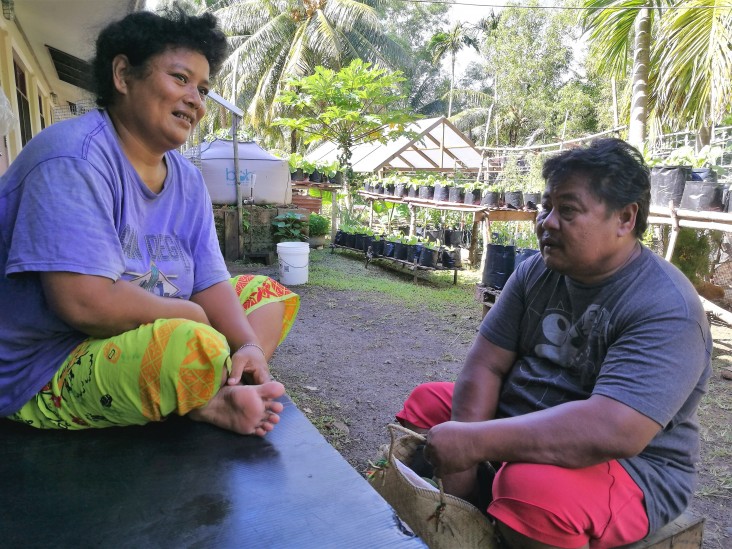
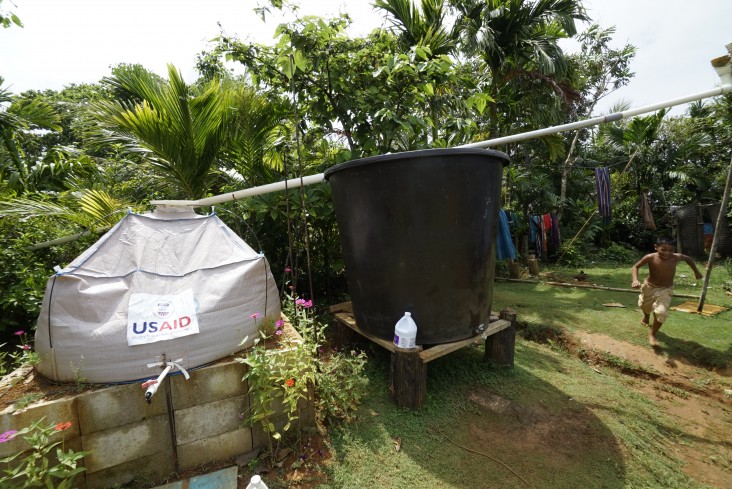
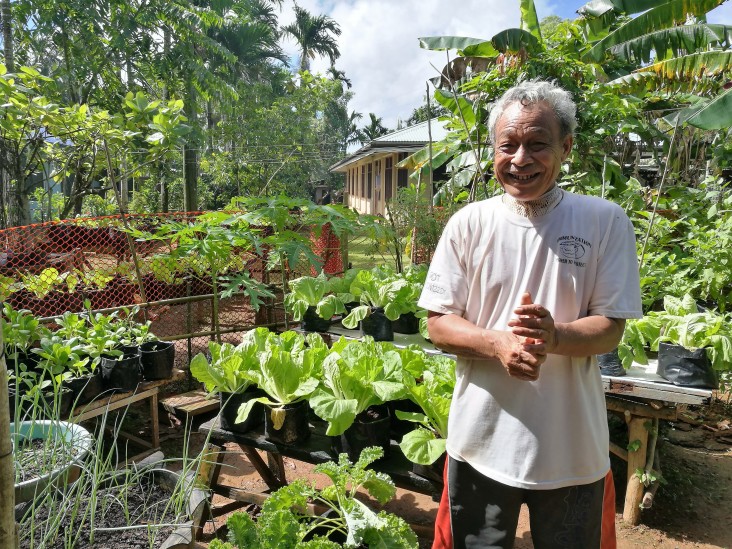
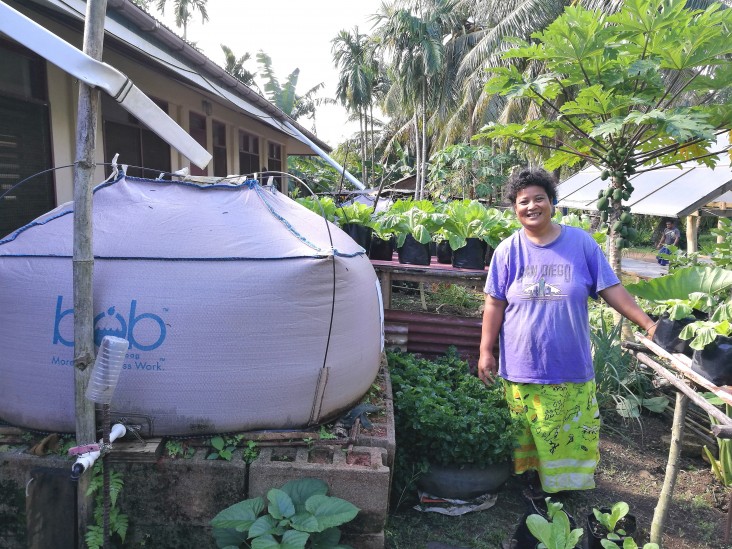
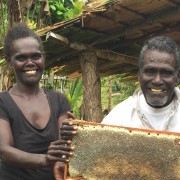
Comment
Make a general inquiry or suggest an improvement.